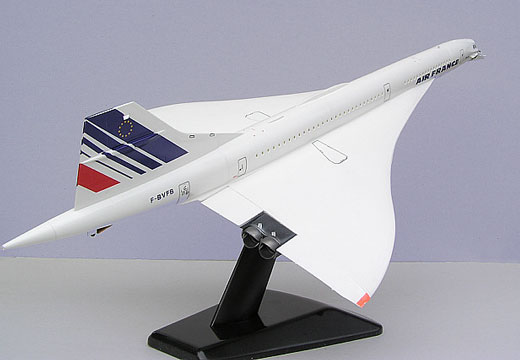Heller 1/72
Concorde (/ˈkɒŋkɔːrd/ KONG-kord, French: [kɔ̃kɔʁd] ⓘ) is a retired Anglo-French supersonic airliner jointly developed and manufactured by Sud Aviation and the British Aircraft Corporation (BAC). Studies began in 1954 and a UK–France treaty followed in 1962, as the programme cost was estimated at £70 million (£1.68 billion in 2023). Construction of six prototypes began in February 1965, with the first flight from Toulouse on 2 March 1969. The market forecast was 350 aircraft, with manufacturers receiving up to 100 options from major airlines. On 9 October 1975, it received its French certificate of airworthiness, and from the UK CAA on 5 December.
Concorde is an aircraft design with a narrow fuselage permitting four-abreast seating for 92 to 128 passengers, an ogival delta wing, and a droop nose for landing visibility. It is powered by four Rolls-Royce/Snecma Olympus 593 turbojets with variable engine intake ramps, and reheat for take-off and acceleration to supersonic speed. Constructed from aluminium, it was the first airliner to have analogue fly-by-wire flight controls. The airliner had transatlantic range while supercruising at twice the speed of sound for 75% of the distance



